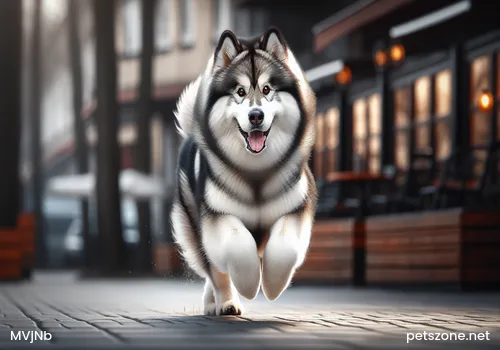Detailed Introduction to Dog's Eyes, Ears, and Nose
Many people like dogs and want to learn more about various attributes of dogs. Today, the editor has compiled a detailed introduction to a dog's eyes, ears, and nose. Parents who like it can take a look.

A dog's field of vision is much wider than a human's. Most breeds have a monocular horizontal field of vision ≥100°, upward vision ≥50°, and downward vision ≥45°. Like humans, dogs are most sensitive to objects in front of them, but their eyes have limited focusing ability and can only see stationary objects clearly within 50 meters. Don't think that dogs can't see you if you stand beyond 50 meters—due to their hunting nature, dogs are very sensitive to moving objects. Zoologists have shown that dogs can see moving objects over 0.5 kilometers away. Similarly, dogs retain the night vision abilities typical of most carnivores, allowing them to see objects clearly in low light. Although dogs are colorblind, they are very sensitive to grayscale images and can distinguish some colors through shades of gray.

For dogs, the ears are second only to the nose in sensory function. According to zoological studies, a dog's hearing is 16 times that of a human. Dogs can distinguish very subtle sounds and have a strong ability to locate the source of sounds. Even while sleeping, dogs remain highly alert and can discern a variety of sounds within a 1-kilometer radius. Dogs with erect ears have more sensitive hearing than those with floppy ears. Due to sympathetic interactions between the ears and eyes, dogs tend to look toward the sound source when identifying direction—this habit is one of the main functions of many working dogs. For verbal commands from humans, dogs can produce conditioned reflexes based on changes in tone and syllables to understand their owner's intention and carry them out. Dogs can hear very faint sounds, but very high frequencies are a strong stimulus that can cause pain. Therefore, unless correcting bad behavior, speaking gently to dogs is advised, and dogs should not be taken to places with loud noise.

Besides its respiratory function, the nose is the most sensitive organ of a dog's sensory system. A dog's sense of smell is one million times more sensitive than a human's. Most mammals have olfactory organs called olfactory mucosa located in the upper part of the nasal cavity, with many folds on the surface. When animals inhale air, it reaches the olfactory mucosa, stimulating olfactory cells that send signals through densely distributed olfactory nerves to the olfactory nervous center to produce the sense of smell. A dog's olfactory mucosa is about four times the area of a human's and contains approximately 200 million olfactory cells—30 to 40 times more than humans. While humans mainly rely on their eyes to observe the environment, things, and obtain information, dogs rely on their noses. Dogs mainly identify their owners, distinguish the sex and estrus status of other dogs, recognize paths, directions, prey, and food by scent. When recognizing and distinguishing things, dogs first show smelling behavior. For example, when given food, dogs always sniff several times before deciding whether to eat it. When encountering strangers, they circle around smelling their scent. A dog's keen sense of smell manifests in two aspects: sensitivity to odors and the ability to distinguish them. Experiments have shown that even when sulfuric acid is diluted to one part in ten million, dogs can still smell it. This sensitive sense of smell allows dogs to stand out among many animals and become important companions in human life and work. Humans have utilized dogs' sharp olfactory ability in many fields. Drug-sniffing dogs can detect tightly packed marijuana, cocaine, and other drugs among numerous backpacks and luggage; police dogs can identify and track scents from items, blood, sweat, and footprints left by suspects at crime scenes; police dogs can even smell the owner of clothes and shoes worn by a person 2–3 months prior; explosive detection dogs can accurately find explosives hidden in buildings, vehicles, ships, and airplanes; rescue dogs can help find victims deeply buried in snow, sand, or collapsed buildings.

When a dog enters a sleep state, its olfactory organs also enter a dormant state until it wakes up.





